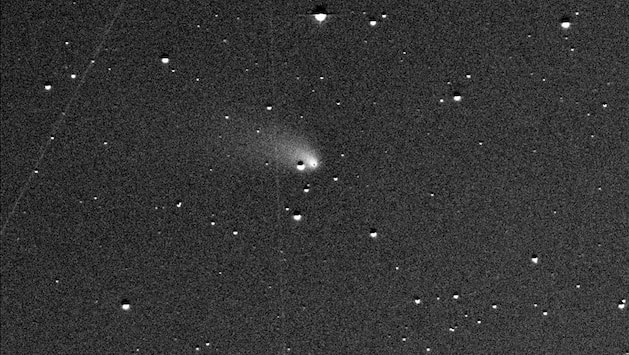When he last came near the earth, Neanderthals were still living in Europe. Comet C/2022 E3 is scheduled to reach its closest point on February 1st. It can sometimes be observed earlier – if you know where.
It only comes around every 50,000 years or so and could be visible to the naked eye in the night sky for the next few days. According to the Association of Star Friends, comet C/2022 E3 (ZTF) will come closest to Earth at around 42 million kilometers in early February. That’s almost a third of the distance from Earth to the sun.
The maximum brightness of the comet is quite remarkable, under very dark skies you might be able to see it – if you know exactly where it is. However, the chairman of the Sternfreunde, Sven Melchert, assumes that you will not discover it in the sky without a telescope or binoculars and without the necessary experience.
“It is initially an object in the morning sky, then it will remain high in the sky near the polar star all night long and say goodbye in the evening sky at the beginning of March,” says the star friends. It has already reached its closest point to the sun in mid-January and will come closest to earth on February 1st.
Good observation periods – if the weather cooperates – are the last days of January and the second half of February, when less moonlight brightens the sky. Because on January 21st and February 20th there is a new moon. The European Space Agency Esa assumes an inconspicuous comet, which can, however, be observed with modest instruments.
According to the German Aerospace Center (DLR), the celestial body is around one kilometer in size, but currently has a coma measuring around 50,000 kilometers, a kind of particle shell. This occurs when the comet approaches the sun and heats up, causing particles to break loose from its ice and migrate into the tail.
Coming from the extreme and frigid edge of the solar system, comets are celestial bodies that were not consumed in planet formation. According to the DLR, they consist of dust grains, organic molecules and, because of their low temperature, frozen gases. The high proportion of volatile matter distinguishes them from asteroids. They are sometimes pushed out of their original orbit by gravity or collisions and then end up close to the sun or the earth.
Most recently, comets C/2021 A1 Leonard and C/2020 F3 Neowise flew past Earth. The celestial body C/2022 E3 (ZTF) gets its name because it was first seen last year by a program called the Zwicky Transient Facility from an observatory in the United States.
